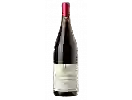
Winery Drouet FréresLouise de l'Oiseau Grenache Rosé
This wine generally goes well with beef and mature and hard cheese.
Food and wine pairings with Louise de l'Oiseau Grenache Rosé
Pairings that work perfectly with Louise de l'Oiseau Grenache Rosé
Original food and wine pairings with Louise de l'Oiseau Grenache Rosé
The Louise de l'Oiseau Grenache Rosé of Winery Drouet Fréres matches generally quite well with dishes of beef or mature and hard cheese such as recipes of roasted fillet of beef with parsley or savoy soup.
Details and technical informations about Winery Drouet Fréres's Louise de l'Oiseau Grenache Rosé.
Discover the grape variety: Mireille
A cross between Italia and Perle de Csaba, registered in 1972 in the Official Catalogue of cultivated table grape varieties, list A1. Mireille has been very little propagated and is therefore almost unknown in France and abroad. - Synonymy: no known synonyms (for all the synonyms of the varieties, click here!).
Informations about the Winery Drouet Fréres
The Winery Drouet Fréres is one of of the world's great estates. It offers 113 wines for sale in the of Loire Valley to come and discover on site or to buy online.
The wine region of Loire Valley
The Loire Valley is a key wine region in western France. It follows the course of the Loire River on its Long journey through the heart of France, from the inland hills of the Auvergne to the plains of the French Atlantic coast near Nantes (Muscadet country). Important in terms of quantity and quality, the region produces large quantities (about 4 million h/l each year) of everyday wines, as well as some of France's greatest wines. Diversity is another of the region's major assets; the styles of wine produced here range from the light, tangy Muscadet to the Sweet, honeyed Bonnezeaux, the Sparkling whites of Vouvray and the juicy, Tannic reds of Chinon and Saumur.
The word of the wine: Second fermentation
In the making of champagne, fermentation of the base wine to which is added the liqueur de tirage and which takes place in the bottle. This second fermentation produces the carbon dioxide, and therefore the bubbles that make up the effervescence of the wine.














